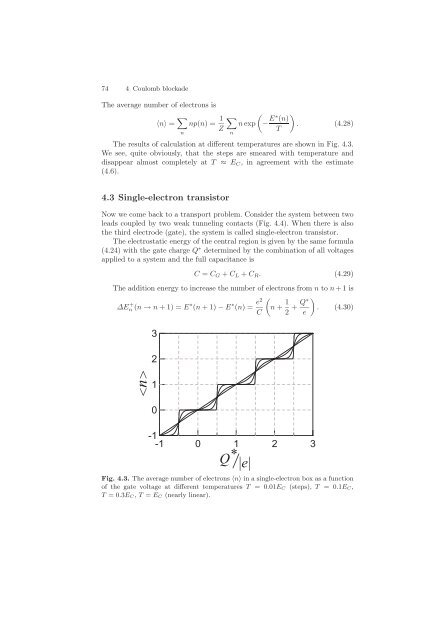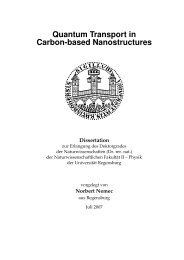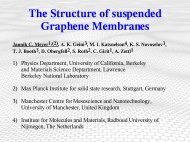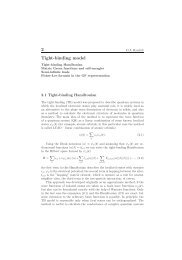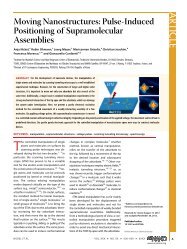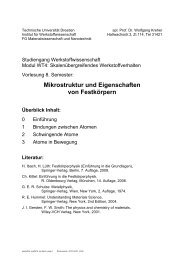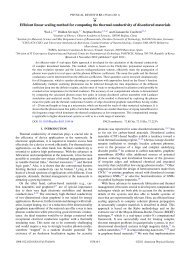4 Coulomb blockade
4 Coulomb blockade
4 Coulomb blockade
You also want an ePaper? Increase the reach of your titles
YUMPU automatically turns print PDFs into web optimized ePapers that Google loves.
74 4 <strong>Coulomb</strong> <strong>blockade</strong><br />
The average number of electrons is<br />
〈n〉 = <br />
np(n) = 1 <br />
<br />
n exp −<br />
Z<br />
E∗ <br />
(n)<br />
. (4.28)<br />
T<br />
n<br />
The results of calculation at different temperatures are shown in Fig. 4.3.<br />
We see, quite obviously, that the steps are smeared with temperature and<br />
disappear almost completely at T ≈ EC, in agreement with the estimate<br />
(4.6).<br />
4.3 Single-electron transistor<br />
Now we come back to a transport problem. Consider the system between two<br />
leads coupled by two weak tunneling contacts (Fig. 4.4). When there is also<br />
the third electrode (gate), the system is called single-electron transistor.<br />
The electrostatic energy of the central region is given by the same formula<br />
(4.24) with the gate charge Q ∗ determined by the combination of all voltages<br />
applied to a system and the full capacitance is<br />
n<br />
C = CG + CL + CR. (4.29)<br />
The addition energy to increase the number of electrons from n to n +1 is<br />
∆E + n (n → n +1)=E ∗ (n +1)− E ∗ (n) = e2<br />
C<br />
<br />
3<br />
2<br />
1<br />
0<br />
<br />
n + 1 Q∗<br />
+<br />
2 e<br />
-1 0 1 2 3<br />
Q /|e|<br />
*<br />
-1<br />
<br />
. (4.30)<br />
Fig. 4.3. The average number of electrons 〈n〉 in a single-electron box as a function<br />
of the gate voltage at different temperatures T = 0.01EC (steps), T = 0.1EC,<br />
T =0.3EC, T = EC (nearly linear).


